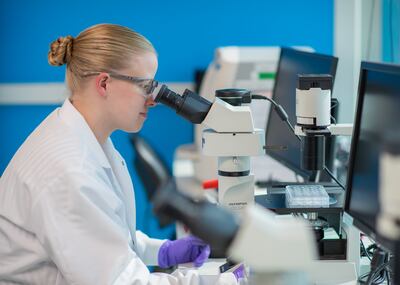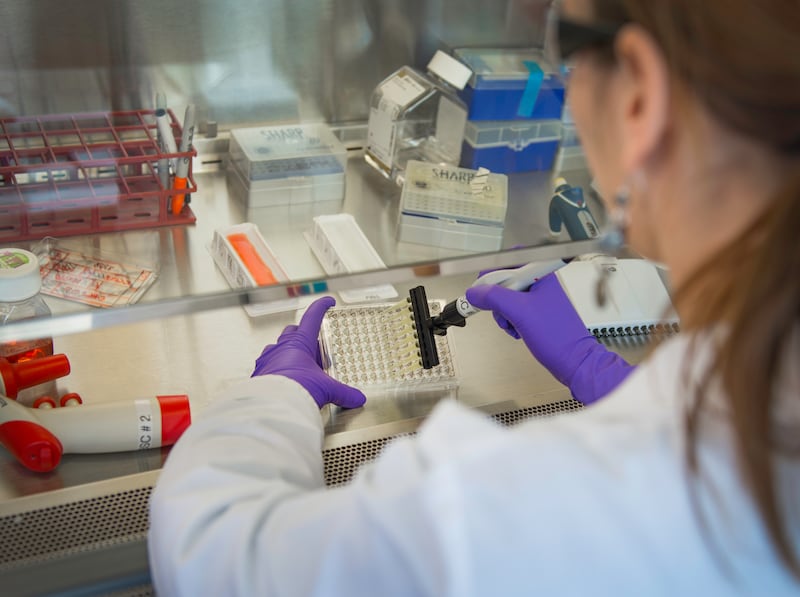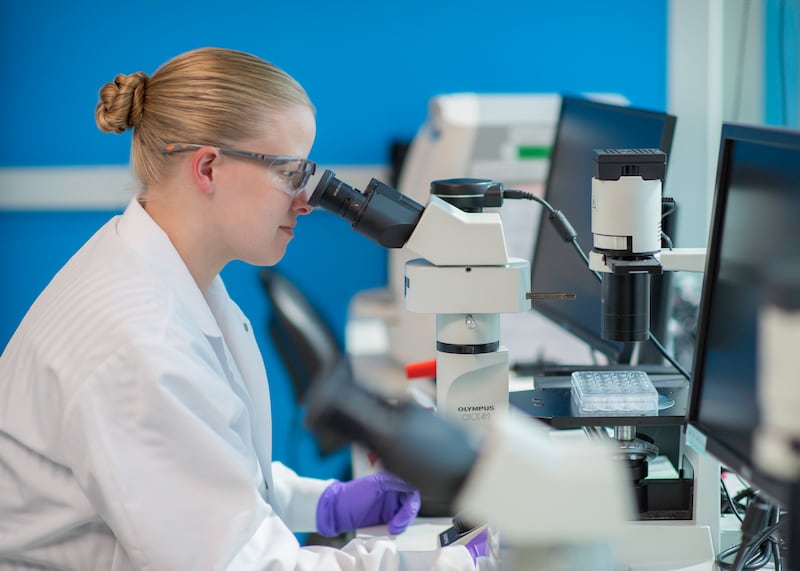SALT LAKE CITY — While the success of Utah's booming high-tech sector has dominated headlines the past few years, a new report reveals the state's life sciences industry has been creating its own heavy-hitters, making enormous contributions to Utah's economy while flying mostly under the radar.
The University of Utah's Kem C. Gardner Policy Institute released its first in-depth report Monday detailing the wide-ranging economic impacts of Utah's life sciences sector. Companies engaged in developing products and services, mostly related to health care such as medical devices, pharmaceuticals, lab testing and diagnostics employ, directly and indirectly, over 130,000 in the state and pay out some $7.6 billion in wages and compensation each year.
Overall, the industry accounts for almost 8 percent of the state's GDP, or about $13 billion annually.

Utah life sciences industry group BioUtah, along with the Governor's Office of Economic Development, commissioned the report and a spokeswoman said the findings "reflect in data what we've known for a long time … that this industry is a providing a huge boost to the state's economy." BioUtah board chairman, and vice president of operations for Clinical Innovations, Richard Ji said the study also reveals that Utah's life sciences impacts are continuing to expand.
"The study is welcome news," Ji said. "It provides fresh, current data about the industry's economic footprint in the state. The sector is clearly a key driver of good, stable jobs for Utahns and we’re growing fast."
According to the report, jobs in the life sciences sector, on average, pay over $68,000 per year, a rate that exceeds that state's average of about $46,000 by almost 50 percent. Those jobs are also expanding at a rate — 26 percent over the last five years — that is outpacing the state's already excellent overall job growth.
Gardner's director of economic and policy research, Juliette Tennert, said even in a state that leads the country in job expansion rate, life sciences is a peak performer.

"Utah already has the fastest pace of job growth in the nation, and life sciences is growing at a rate even faster than that," Tennert said in a statement. "The industry represents quality economic growth through its innovation, exports and high-paying employment."
The study's lead author and Gardner Senior Research Economist Levi Pace told the Deseret News that while those in the industry are familiar with the successes of the state's life sciences companies, for the general public, it may have gone unnoticed.
"Everyone knows their health care providers, doctors and surgeons and pharmacists, but the research and innovations behind their work is less obvious," Pace said. "Also, unlike the concentration of high-tech companies in the Thanksgiving Point area, these companies are much more distributed. Really, throughout the entire state."
Even a quick look at Utah's four biggest life science companies, ranked by number of employees, reflects the geographic distribution Pace noted. ARUP, national reference laboratory, Salt Lake City; Fresenius, medical care, Ogden; Merit Medical, medical devices, South Jordan; and Edwards Lifesciences, medical devices, Draper.
Pace said the life science industry's stellar growth rate, reflected in both overall economic impacts and number of persons employed, likely tracks back to numerous factors including Utah's years of success in the sector, the high level of research coming out of the state's research schools like Utah State University and the University of Utah and reaching a pivotal point of industry activity.
"Utah's life sciences industry appears to have reached a critical mass, where it's drawing an unprecedented level of interest and outside investment," Pace said. "With our state's long history (in life sciences) it's also now woven into the fabric of our economy and a huge contributor."
Pace noted the industry is also more resilient to economic ebbs and flows than most other sectors. During the Great Recession, life sciences was one of the few areas that not only did not lose jobs, but continued to grow, albeit at a reduced rate, Pace said. And that's a characteristic that will continue to bode well for Utah.
"Life sciences rise with healthcare and, with our aging demographic, it is likely to stay strong," Pace said. "In the event of another economic downturn, we might see that growth soften, but I would expect it to continue."
Adding to the sector's economic resilience is the level of diversity within the category. Pace noted one of the benchmarks of the report was establishing the range of companies that appropriately fall under the life sciences listing, which includes various types of manufacturing, research and testing, medical laboratory services, drugs and pharmaceuticals, and distribution.
One of Utah's life science success stories is Recursion Pharmaceuticals, a company that's developed an innovative approach to drug discovery leveraging high-level data science and artificial intelligence. Recursion co-founder and CEO Chris Gibson said the burgeoning life sciences sector is helping build the state's reputation far beyond its borders.
"The life sciences industry brings high-paying jobs and highly educated people to Utah, helping to build a high-functioning and prosperous state economy," Gibson said. "The industry also improves the visibility and prominence of the state. We want to help build Utah's reputation for its significant contributions to society, including many life-saving, health-improving innovations."
Gardner's report on Utah's life sciences industry is available for review online.




